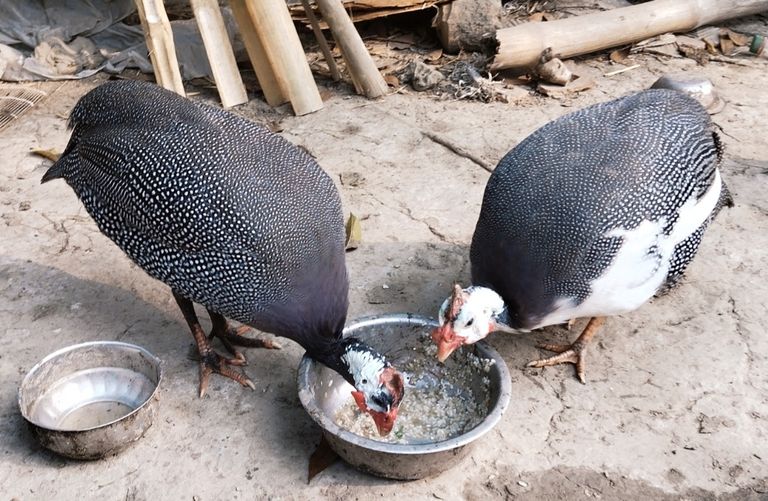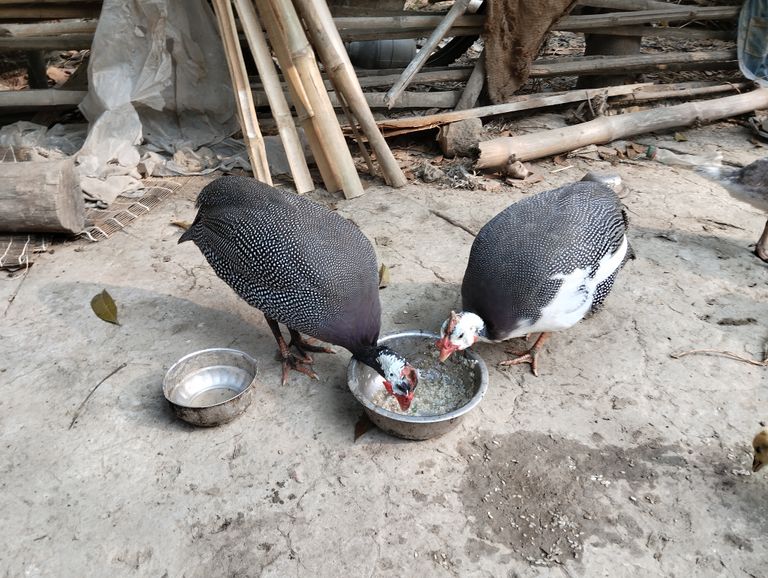
Guinea Fowl Farming A Comprehensive Guide.
Guinea fowl farming is gaining popularity due to the bird's resilience, low maintenance, and economic benefits. These birds are not only a great source of meat and eggs but also serve as natural pest controllers. In this guide, we will discuss the various aspects of raising guinea fowl, including their housing, feeding, breeding, and overall care.
Benefits of Guinea Fowl Farming
- Low Maintenance: Guinea fowls require minimal care compared to chickens.
- Pest Control: They are excellent at controlling insects, ticks, and other pests in the farm.
- High-Quality Meat and Eggs: The meat is lean and flavorful, and the eggs are nutritious.
- Hardiness: These birds are resistant to many poultry diseases.
- Security Alerts: Guinea fowls are naturally alert and can act as watchdogs by making noise when they sense danger.
Selecting Guinea Fowl Breeds
The most common guinea fowl breeds include:
Helmeted Guinea Fowl: The most popular breed, known for its hardiness.
White-Breasted Guinea Fowl: Recognized by its white chest and unique appearance.
Vulturine Guinea Fowl: Has a striking blue and black feather pattern.
Housing and Shelter Requirements
Guinea fowls are hardy birds, but proper housing is essential for protection from predators and harsh weather conditions. Here are key considerations:
Space Requirements: Each bird needs about 2-3 square feet of space in the coop.
Ventilation: Ensure good airflow to prevent respiratory issues.
Perches: Provide perches for roosting, as they prefer elevated spaces.
Security: Use predator-proof enclosures to protect them at night.
Free Range Access: Allow free-range during the day for natural foraging.
Feeding Guinea Fowls
Guinea fowls are omnivores and thrive on a diverse diet. Their diet should include:
Starter Feed: For keets (young guinea fowls), use a high-protein starter feed (24-28% protein).
Grower Feed: Once they are 6 weeks old, transition to 18-20% protein feed.
Greens and Grains: Supplement their diet with leafy greens, corn, wheat, and millet.
Insects and Worms: Free-ranging helps them consume natural protein sources.
Clean Water: Always provide fresh and clean drinking water.
Breeding and Egg Production
Guinea fowls start laying eggs at around 6-8 months of age.
They lay seasonal eggs, mostly in the warmer months.
A single guinea fowl can lay about 100-150 eggs per season.
Their eggs are smaller than chicken eggs but have a harder shell.
For hatching, eggs can be incubated naturally by a broody hen or using an incubator.
Incubation takes about 26-28 days.
Health and Disease Management
Guinea fowls are generally hardy, but common health issues include:
Respiratory infections: Ensure proper ventilation to prevent these.
Parasites: Regularly check for mites and worms.
Injuries: They are active birds and can injure themselves in enclosed spaces.
Vaccination: While not always necessary, consult a vet for recommended vaccinations.
Managing Guinea Fowls
Training: Guinea fowls can be trained to return to their coop at night by feeding them at the same time daily.
Handling: They are naturally skittish, so handle them gently and regularly from a young age.
Integration with Other Poultry: They can coexist with chickens, but they may be dominant.
Marketing and Profitability
Guinea fowl farming can be a profitable business. Ways to market your products include:
Selling live birds to farms and households.
Selling guinea fowl meat to local markets and restaurants.
Selling eggs for consumption or hatching.
Offering pest control services by renting out birds for farms.
Conclusion
Guinea fowl farming is a sustainable and profitable venture. With proper housing, feeding, and care, these birds can provide economic benefits while requiring minimal effort. Whether for meat, eggs, or pest control, guinea fowls are an excellent addition to any farm or homestead. I’ve created a detailed blog on guinea fowl farming. Let me know if you’d like any modifications or additional details.
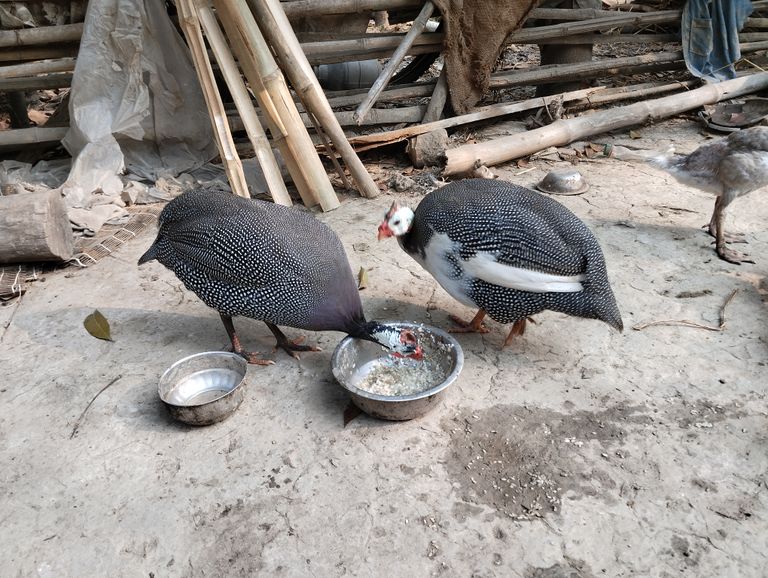
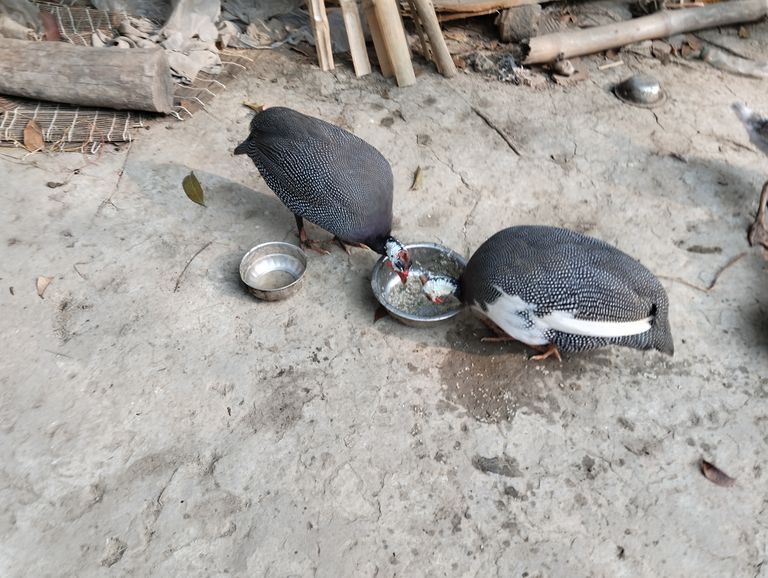
The Unmatched Taste of Eid Chicken: A Celebration of Flavor
Eid is a time of joy, togetherness, and, of course, delicious food. Among the many dishes prepared for this special occasion, chicken holds a prominent place in festive meals. But have you ever wondered why chicken prepared during Eid tastes exceptionally delicious? Let’s explore the secrets behind the unique and irresistible flavor of Eid chicken.
The Freshness Factor
One of the primary reasons Eid chicken tastes better is its freshness. Many families prefer slaughtering their own chickens on Eid, ensuring the meat is as fresh as possible. Freshly slaughtered chicken retains its natural juices, making the meat more tender and flavorful compared to store-bought frozen alternatives.
Traditional Spices and Marinades
Eid celebrations bring out the best in traditional cooking, and the spices used in preparing chicken dishes play a vital role in enhancing flavor. Aromatic spices such as cumin, coriander, turmeric, garam masala, and saffron are commonly used in marinades, infusing the meat with deep, rich flavors. Many families have their own secret spice blends passed down through generations, making each dish unique.
Slow Cooking for Maximum Flavor
Unlike regular meals, Eid dishes are often cooked with great patience and care. Many chicken recipes, such as chicken korma, biryani, or curry, require slow cooking, allowing the spices and ingredients to blend perfectly. The slow cooking process ensures that every bite is infused with a delightful combination of spices and juices, making the chicken extraordinarily flavorful.
The Use of Ghee and Aromatic Ingredients
Another factor that elevates the taste of Eid chicken is the use of ghee instead of regular oil. Ghee adds a rich, buttery texture and enhances the overall aroma of the dish. Additionally, ingredients like fried onions, saffron, yogurt, and nuts contribute to a luxurious and mouthwatering flavor profile.
The Emotional Connection
Food is not just about ingredients and cooking methods; it also carries emotions and traditions. The joy of celebrating Eid with loved ones, the effort put into preparing special meals, and the anticipation of sharing them with family and friends add an extra layer of satisfaction and pleasure. This emotional connection makes the food taste even better.
Popular Eid Chicken Dishes
Here are some of the most beloved chicken dishes prepared during Eid:
Chicken Biryani – A fragrant and spicy rice dish layered with marinated chicken and cooked to perfection.
Chicken Korma – A creamy and rich curry made with yogurt, nuts, and aromatic spices.
Chicken Roast – Whole or cut pieces of chicken marinated with traditional spices and slow-roasted for a juicy and tender texture.
Chicken Rezala – A mild yet flavorful dish cooked in a yogurt-based white gravy with a hint of sweetness.
Spicy Chicken Curry – A classic Eid favorite with a perfect balance of heat and flavor.
Final Thoughts
Eid is a time to indulge in delicious meals that bring families together. The unmatched taste of Eid chicken comes from its freshness, traditional spices, slow cooking techniques, and the love and care put into its preparation. Whether it’s a flavorful biryani or a rich korma, the magic of Eid chicken lies in the perfect blend of tradition, technique, and taste.
This Eid, savor the joy of cooking and sharing your favorite chicken dishes with your loved ones, and experience the extraordinary flavors that make this festival so special. I've drafted a blog post about the unique flavors of Eid chicken. Let me know if you need any adjustments or additions.
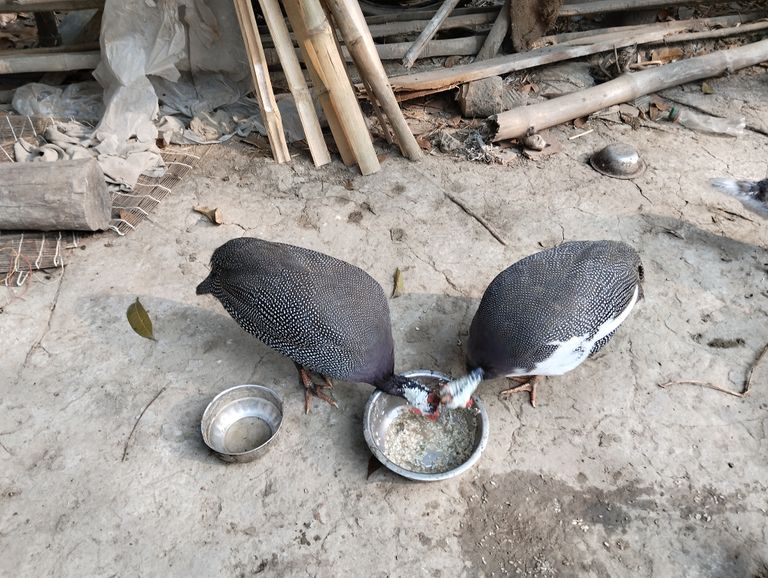
Feeding Your Chicken Properly: A Comprehensive Guide
Raising chickens can be a rewarding experience, whether you do it for eggs, meat, or as a hobby. One of the most important aspects of poultry care is providing the right nutrition. Feeding your chickens properly ensures they stay healthy, productive, and happy. In this guide, we will explore the types of feed, feeding schedules, supplements, and common feeding mistakes to avoid.
Understanding Chicken Nutrition
Chickens, like all animals, require a balanced diet to thrive. Their diet consists of proteins, carbohydrates, fats, vitamins, and minerals. Each component plays a vital role in their overall health and productivity.
- Protein
Protein is essential for muscle development and egg production. Young chicks need around 18-20% protein in their diet, while laying hens require about 16%. Broilers, raised for meat, need a high-protein diet of around 22-24% for rapid growth.
- Carbohydrates
Carbohydrates provide the energy that chickens need for daily activities. Grains such as corn, wheat, and barley are excellent sources of carbohydrates.
- Fats
Fats are a concentrated energy source that also helps in absorbing fat-soluble vitamins like A, D, E, and K. Chickens get fats from seeds, grains, and fish meal.
- Vitamins and Minerals
Vitamins and minerals are crucial for immune function, bone health, and overall well-being. Key minerals like calcium and phosphorus help in eggshell formation and bone strength. Vitamin deficiencies can lead to various health issues, such as poor growth and weak immune systems.
Types of Chicken Feed
There are different types of chicken feed available, each designed for specific growth stages and purposes.
- Starter Feed
Starter feed is specially formulated for baby chicks up to 6 weeks old. It has high protein content (18-20%) to support rapid growth and development.
- Grower Feed
Grower feed is given to pullets (young hens) between 6 and 20 weeks of age. It contains 15-18% protein, providing the necessary nutrients for growth without promoting excessive fat accumulation.
- Layer Feed
Layer feed is designed for hens that are actively laying eggs, usually from 18 weeks onward. It contains around 16% protein and extra calcium to ensure strong eggshells.
- Broiler Feed
Broiler feed is formulated for meat-producing chickens. It has a high protein content (22-24%) to promote fast muscle growth.
- Scratch Grain
Scratch grains are a mix of cracked corn, wheat, barley, and other grains. They are a treat rather than a complete diet and should be given in moderation to prevent nutritional imbalances.
Feeding Schedule and Amounts
Feeding chickens properly involves not only choosing the right feed but also following a suitable schedule and portion sizes.
Baby Chicks (0-6 weeks): Provide unlimited access to starter feed.
Growing Pullets (6-20 weeks): Provide grower feed twice a day.
Laying Hens (20+ weeks): Feed layer pellets or crumbles twice a day and provide free access to oyster shells for extra calcium.
Broilers: Feed high-protein broiler feed throughout the day for rapid growth.
Supplements and Treats
Apart from their regular feed, chickens can benefit from supplements and occasional treats.
- Calcium and Grit
Laying hens need calcium supplements, such as crushed oyster shells, to maintain eggshell strength. Grit, made from crushed stones, helps chickens digest their food properly.
- Kitchen Scraps
Chickens enjoy kitchen scraps like vegetable peels, cooked rice, and fruits. However, avoid feeding them chocolate, caffeine, avocado, and onions, as these can be toxic.
- Mealworms and Insects
Mealworms, earthworms, and other insects are excellent protein sources that chickens love. They also help improve feather quality and overall health.
Common Feeding Mistakes to Avoid
- Overfeeding Scratch Grains: Scratch grains are a treat, not a complete meal. Too much can lead to obesity and nutrient deficiencies.
- Lack of Fresh Water: Chickens need clean, fresh water at all times to stay hydrated and healthy.
- Ignoring Nutritional Needs: Feeding the wrong type of feed for their stage can lead to poor growth, weak eggshells, or health issues.
- Feeding Moldy or Spoiled Food: Always check feed for mold or spoilage, as contaminated food can cause serious health problems.
- Not Providing Enough Protein: Protein is essential for growth and egg production. Ensure their diet has adequate protein content.
Conclusion
Properly feeding your chickens is key to their health, productivity, and longevity. By providing a balanced diet, following a feeding schedule, and avoiding common mistakes, you can ensure your flock thrives. Whether you are raising chickens for eggs, meat, or as pets, good nutrition is the foundation of a successful poultry-keeping experience.
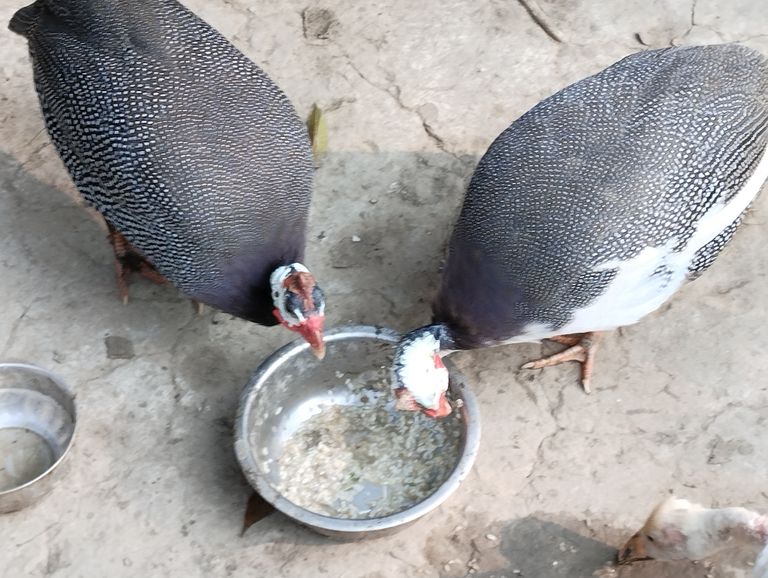
Feeding Your Chicken Properly: A Comprehensive Guide
Raising chickens can be a rewarding experience, whether you do it for eggs, meat, or as a hobby. One of the most important aspects of poultry care is providing the right nutrition. Feeding your chickens properly ensures they stay healthy, productive, and happy. In this guide, we will explore the types of feed, feeding schedules, supplements, and common feeding mistakes to avoid.
Understanding Chicken Nutrition
Chickens, like all animals, require a balanced diet to thrive. Their diet consists of proteins, carbohydrates, fats, vitamins, and minerals. Each component plays a vital role in their overall health and productivity.
- Protein
Protein is essential for muscle development and egg production. Young chicks need around 18-20% protein in their diet, while laying hens require about 16%. Broilers, raised for meat, need a high-protein diet of around 22-24% for rapid growth.
- Carbohydrates
Carbohydrates provide the energy that chickens need for daily activities. Grains such as corn, wheat, and barley are excellent sources of carbohydrates.
- Fats
Fats are a concentrated energy source that also helps in absorbing fat-soluble vitamins like A, D, E, and K. Chickens get fats from seeds, grains, and fish meal.
- Vitamins and Minerals
Vitamins and minerals are crucial for immune function, bone health, and overall well-being. Key minerals like calcium and phosphorus help in eggshell formation and bone strength. Vitamin deficiencies can lead to various health issues, such as poor growth and weak immune systems.
Types of Chicken Feed
There are different types of chicken feed available, each designed for specific growth stages and purposes.
- Starter Feed
Starter feed is specially formulated for baby chicks up to 6 weeks old. It has high protein content (18-20%) to support rapid growth and development.
- Grower Feed
Grower feed is given to pullets (young hens) between 6 and 20 weeks of age. It contains 15-18% protein, providing the necessary nutrients for growth without promoting excessive fat accumulation.
- Layer Feed
Layer feed is designed for hens that are actively laying eggs, usually from 18 weeks onward. It contains around 16% protein and extra calcium to ensure strong eggshells.
- Broiler Feed
Broiler feed is formulated for meat-producing chickens. It has a high protein content (22-24%) to promote fast muscle growth.
- Scratch Grain
Scratch grains are a mix of cracked corn, wheat, barley, and other grains. They are a treat rather than a complete diet and should be given in moderation to prevent nutritional imbalances.
Feeding Schedule and Amounts
Feeding chickens properly involves not only choosing the right feed but also following a suitable schedule and portion sizes.
Baby Chicks (0-6 weeks): Provide unlimited access to starter feed.
Growing Pullets (6-20 weeks): Provide grower feed twice a day.
Laying Hens (20+ weeks): Feed layer pellets or crumbles twice a day and provide free access to oyster shells for extra calcium.
Broilers: Feed high-protein broiler feed throughout the day for rapid growth.
Supplements and Treats
Apart from their regular feed, chickens can benefit from supplements and occasional treats.
- Calcium and Grit
Laying hens need calcium supplements, such as crushed oyster shells, to maintain eggshell strength. Grit, made from crushed stones, helps chickens digest their food properly.
- Kitchen Scraps
Chickens enjoy kitchen scraps like vegetable peels, cooked rice, and fruits. However, avoid feeding them chocolate, caffeine, avocado, and onions, as these can be toxic.
- Mealworms and Insects
Mealworms, earthworms, and other insects are excellent protein sources that chickens love. They also help improve feather quality and overall health.
Common Feeding Mistakes to Avoid
- Overfeeding Scratch Grains: Scratch grains are a treat, not a complete meal. Too much can lead to obesity and nutrient deficiencies.
- Lack of Fresh Water: Chickens need clean, fresh water at all times to stay hydrated and healthy.
- Ignoring Nutritional Needs: Feeding the wrong type of feed for their stage can lead to poor growth, weak eggshells, or health issues.
- Feeding Moldy or Spoiled Food: Always check feed for mold or spoilage, as contaminated food can cause serious health problems.
- Not Providing Enough Protein: Protein is essential for growth and egg production. Ensure their diet has adequate protein content.
Conclusion
Properly feeding your chickens is key to their health, productivity, and longevity. By providing a balanced diet, following a feeding schedule, and avoiding common mistakes, you can ensure your flock thrives. Whether you are raising chickens for eggs, meat, or as pets, good nutrition is the foundation of a successful poultry-keeping experience.
